The Mass Media and the Political Agenda Chapter

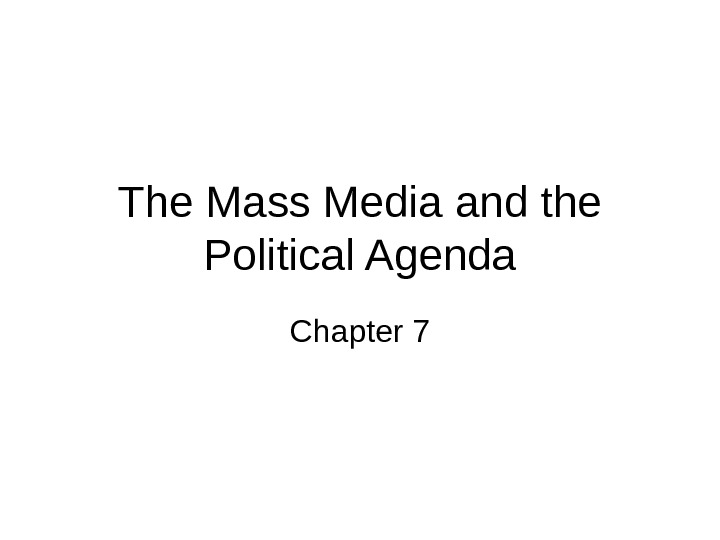
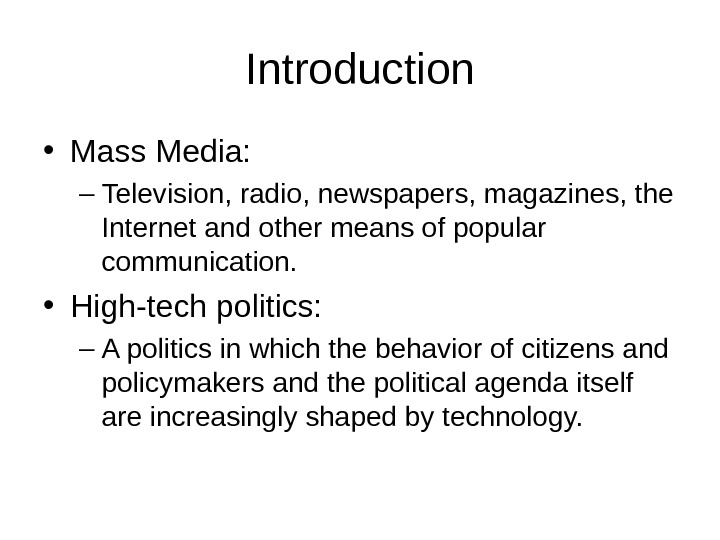
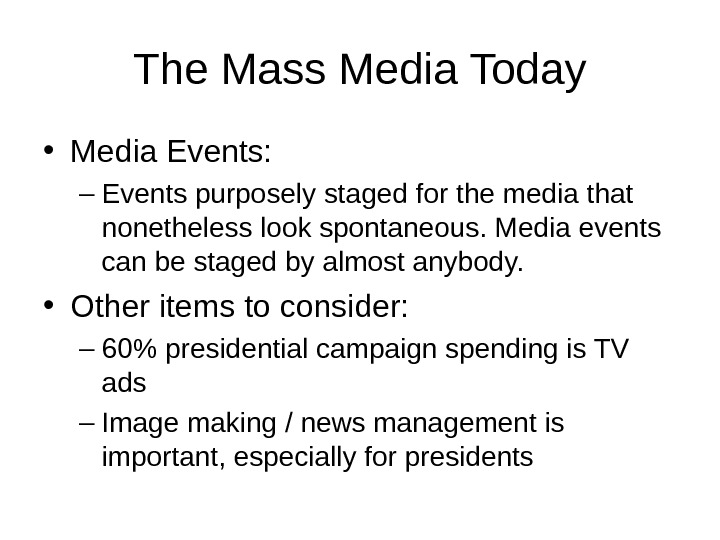
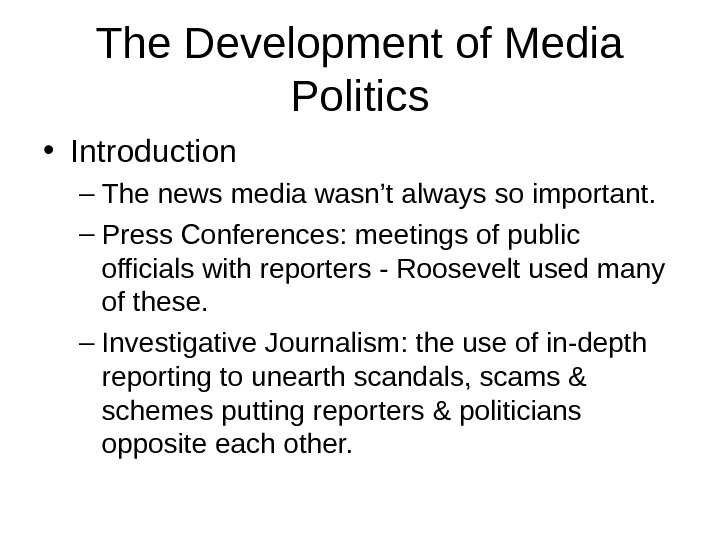


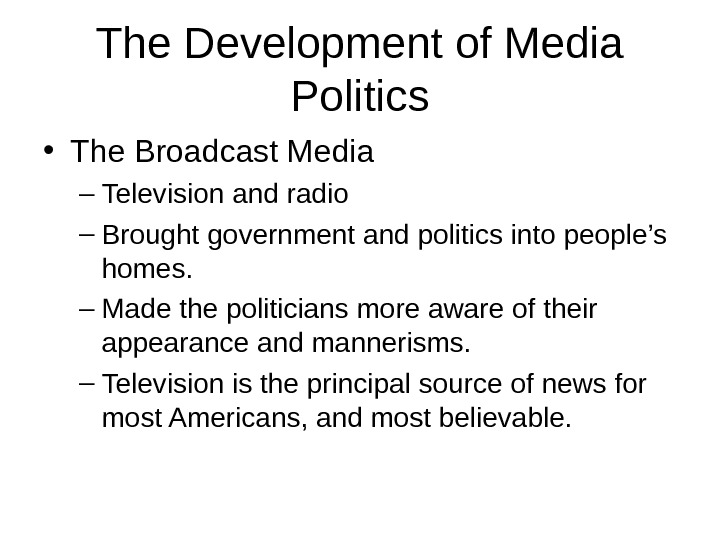
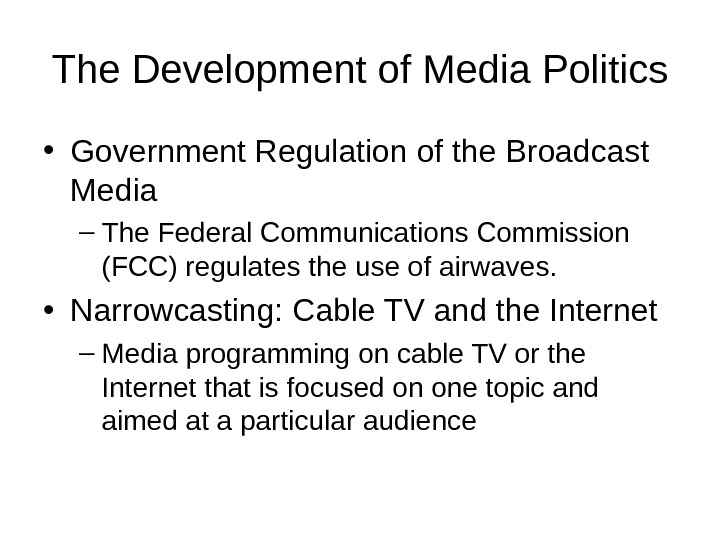
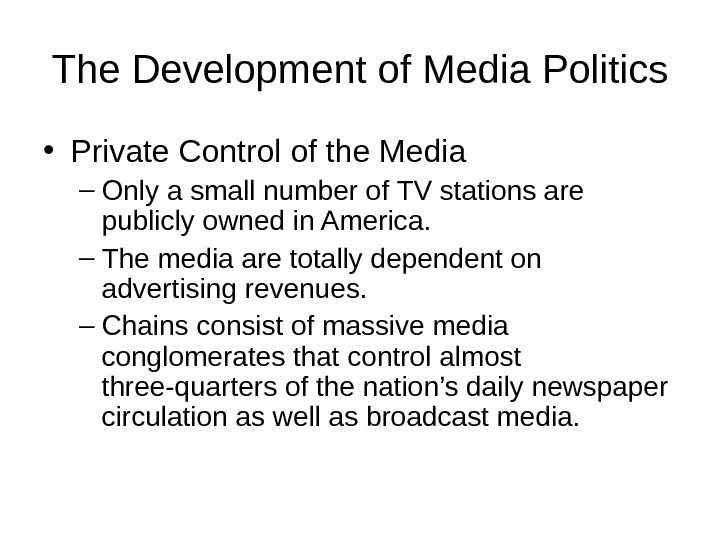
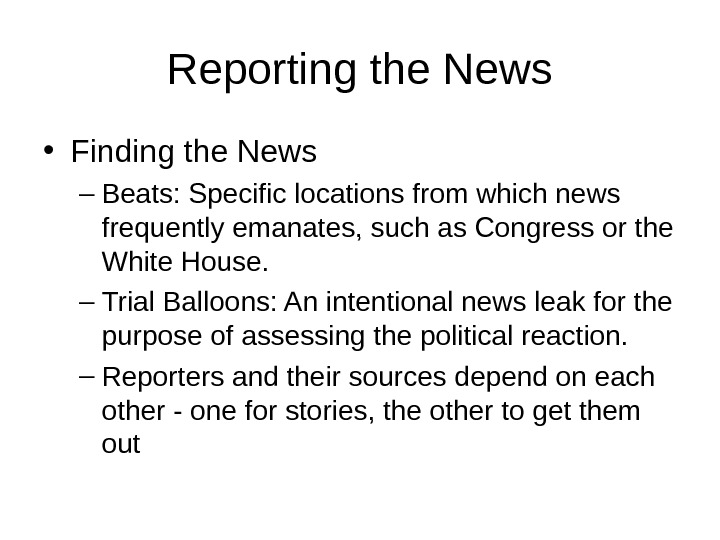
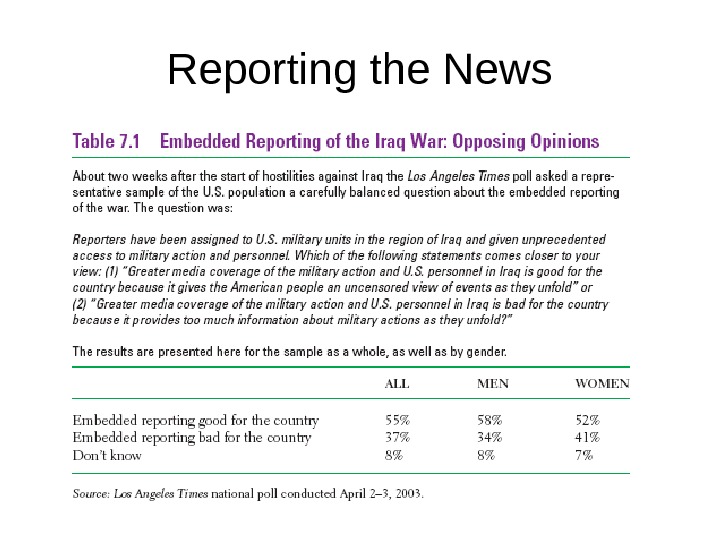
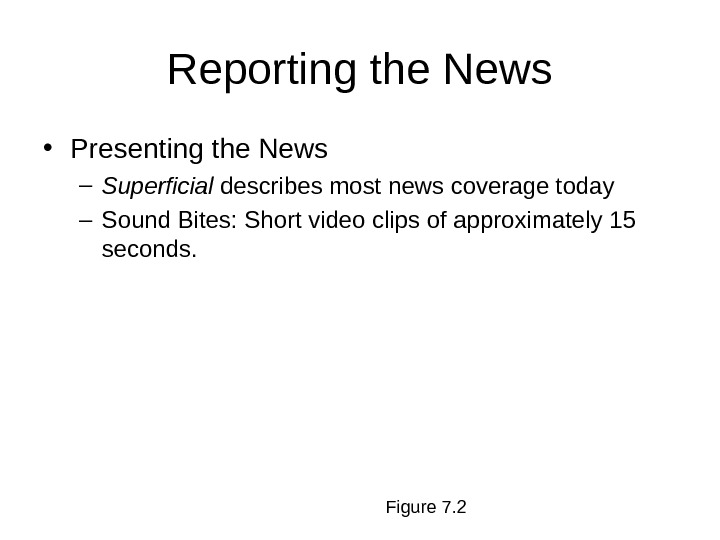
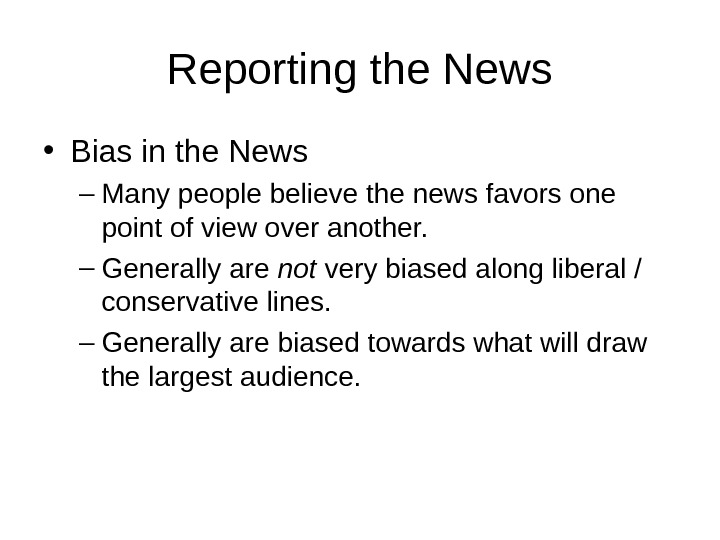
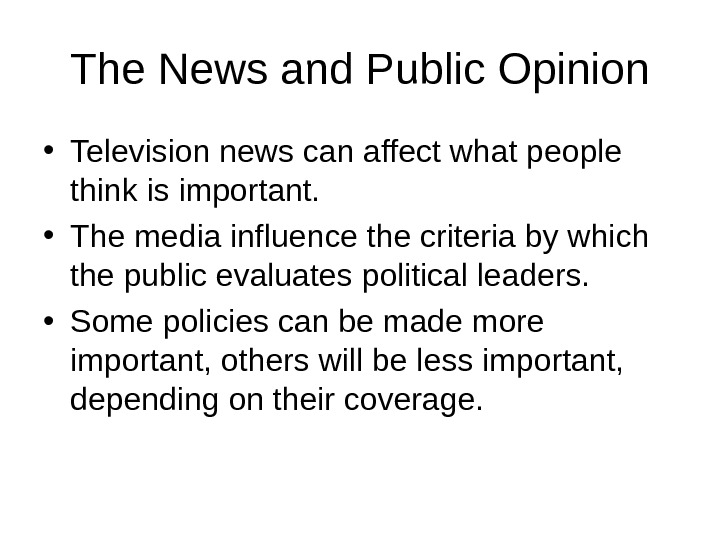


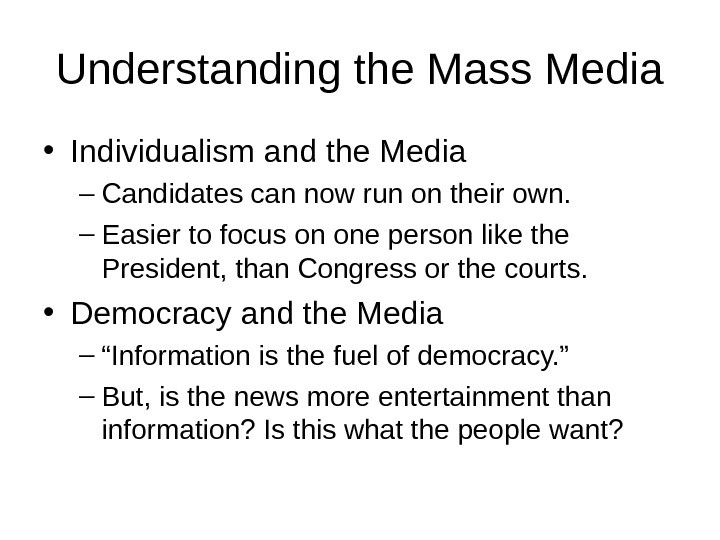
- Размер: 144 Кб
- Количество слайдов: 17
Описание презентации The Mass Media and the Political Agenda Chapter по слайдам
 The Mass Media and the Political Agenda Chapter
The Mass Media and the Political Agenda Chapter
 Introduction • Mass Media: – Television, radio, newspapers, magazines, the Internet and other means of popular communication. • High-tech politics: – A politics in which the behavior of citizens and policymakers and the political agenda itself are increasingly shaped by technology.
Introduction • Mass Media: – Television, radio, newspapers, magazines, the Internet and other means of popular communication. • High-tech politics: – A politics in which the behavior of citizens and policymakers and the political agenda itself are increasingly shaped by technology.
 The Mass Media Today • Media Events: – Events purposely staged for the media that nonetheless look spontaneous. Media events can be staged by almost anybody. • Other items to consider: – 60% presidential campaign spending is TV ads – Image making / news management is important, especially for presidents
The Mass Media Today • Media Events: – Events purposely staged for the media that nonetheless look spontaneous. Media events can be staged by almost anybody. • Other items to consider: – 60% presidential campaign spending is TV ads – Image making / news management is important, especially for presidents
 The Development of Media Politics • Introduction – The news media wasn’t always so important. – Press Conferences: meetings of public officials with reporters — Roosevelt used many of these. – Investigative Journalism: the use of in-depth reporting to unearth scandals, scams & schemes putting reporters & politicians opposite each other.
The Development of Media Politics • Introduction – The news media wasn’t always so important. – Press Conferences: meetings of public officials with reporters — Roosevelt used many of these. – Investigative Journalism: the use of in-depth reporting to unearth scandals, scams & schemes putting reporters & politicians opposite each other.
 The Development of Media Politics • The Print Media – Newspapers and magazines – “ Yellow journalism” characterized newspapers at the turn of the century. – Among the press there is a pecking order. – Newspaper circulation has been declining. – Magazines are also struggling.
The Development of Media Politics • The Print Media – Newspapers and magazines – “ Yellow journalism” characterized newspapers at the turn of the century. – Among the press there is a pecking order. – Newspaper circulation has been declining. – Magazines are also struggling.
 Figure 7. 1 The Development of Media Politics
Figure 7. 1 The Development of Media Politics
 The Development of Media Politics • The Broadcast Media – Television and radio – Brought government and politics into people’s homes. – Made the politicians more aware of their appearance and mannerisms. – Television is the principal source of news for most Americans, and most believable.
The Development of Media Politics • The Broadcast Media – Television and radio – Brought government and politics into people’s homes. – Made the politicians more aware of their appearance and mannerisms. – Television is the principal source of news for most Americans, and most believable.
 The Development of Media Politics • Government Regulation of the Broadcast Media – The Federal Communications Commission (FCC) regulates the use of airwaves. • Narrowcasting: Cable TV and the Internet – Media programming on cable TV or the Internet that is focused on one topic and aimed at a particular audience
The Development of Media Politics • Government Regulation of the Broadcast Media – The Federal Communications Commission (FCC) regulates the use of airwaves. • Narrowcasting: Cable TV and the Internet – Media programming on cable TV or the Internet that is focused on one topic and aimed at a particular audience
 The Development of Media Politics • Private Control of the Media – Only a small number of TV stations are publicly owned in America. – The media are totally dependent on advertising revenues. – Chains consist of massive media conglomerates that control almost three-quarters of the nation’s daily newspaper circulation as well as broadcast media.
The Development of Media Politics • Private Control of the Media – Only a small number of TV stations are publicly owned in America. – The media are totally dependent on advertising revenues. – Chains consist of massive media conglomerates that control almost three-quarters of the nation’s daily newspaper circulation as well as broadcast media.
 Reporting the News • Finding the News – Beats: Specific locations from which news frequently emanates, such as Congress or the White House. – Trial Balloons: An intentional news leak for the purpose of assessing the political reaction. – Reporters and their sources depend on each other — one for stories, the other to get them out
Reporting the News • Finding the News – Beats: Specific locations from which news frequently emanates, such as Congress or the White House. – Trial Balloons: An intentional news leak for the purpose of assessing the political reaction. – Reporters and their sources depend on each other — one for stories, the other to get them out
 Reporting the News
Reporting the News
 Figure 7. 2 Reporting the News • Presenting the News – Superficial describes most news coverage today – Sound Bites: Short video clips of approximately 15 seconds.
Figure 7. 2 Reporting the News • Presenting the News – Superficial describes most news coverage today – Sound Bites: Short video clips of approximately 15 seconds.
 Reporting the News • Bias in the News – Many people believe the news favors one point of view over another. – Generally are not very biased along liberal / conservative lines. – Generally are biased towards what will draw the largest audience.
Reporting the News • Bias in the News – Many people believe the news favors one point of view over another. – Generally are not very biased along liberal / conservative lines. – Generally are biased towards what will draw the largest audience.
 The News and Public Opinion • Television news can affect what people think is important. • The media influence the criteria by which the public evaluates political leaders. • Some policies can be made more important, others will be less important, depending on their coverage.
The News and Public Opinion • Television news can affect what people think is important. • The media influence the criteria by which the public evaluates political leaders. • Some policies can be made more important, others will be less important, depending on their coverage.
 The Media’s Agenda-Setting Function • Policy Agenda: – The issues that attract the serious attention of public officials and other people actively involved in politics at the time. • Policy Entrepreneurs: – People who invest their political “capital” in an issue. – All depend on good images and good will.
The Media’s Agenda-Setting Function • Policy Agenda: – The issues that attract the serious attention of public officials and other people actively involved in politics at the time. • Policy Entrepreneurs: – People who invest their political “capital” in an issue. – All depend on good images and good will.
 Understanding the Mass Media • The Media and the Scope of Government – The media as watchdog restricts politicians. – New proposals are met with skepticism — so that restricts what the government can do. – But, if the media identify a problem, they ask what the government is going to do to fix it.
Understanding the Mass Media • The Media and the Scope of Government – The media as watchdog restricts politicians. – New proposals are met with skepticism — so that restricts what the government can do. – But, if the media identify a problem, they ask what the government is going to do to fix it.
 Understanding the Mass Media • Individualism and the Media – Candidates can now run on their own. – Easier to focus on one person like the President, than Congress or the courts. • Democracy and the Media – “ Information is the fuel of democracy. ” – But, is the news more entertainment than information? Is this what the people want?
Understanding the Mass Media • Individualism and the Media – Candidates can now run on their own. – Easier to focus on one person like the President, than Congress or the courts. • Democracy and the Media – “ Information is the fuel of democracy. ” – But, is the news more entertainment than information? Is this what the people want?

